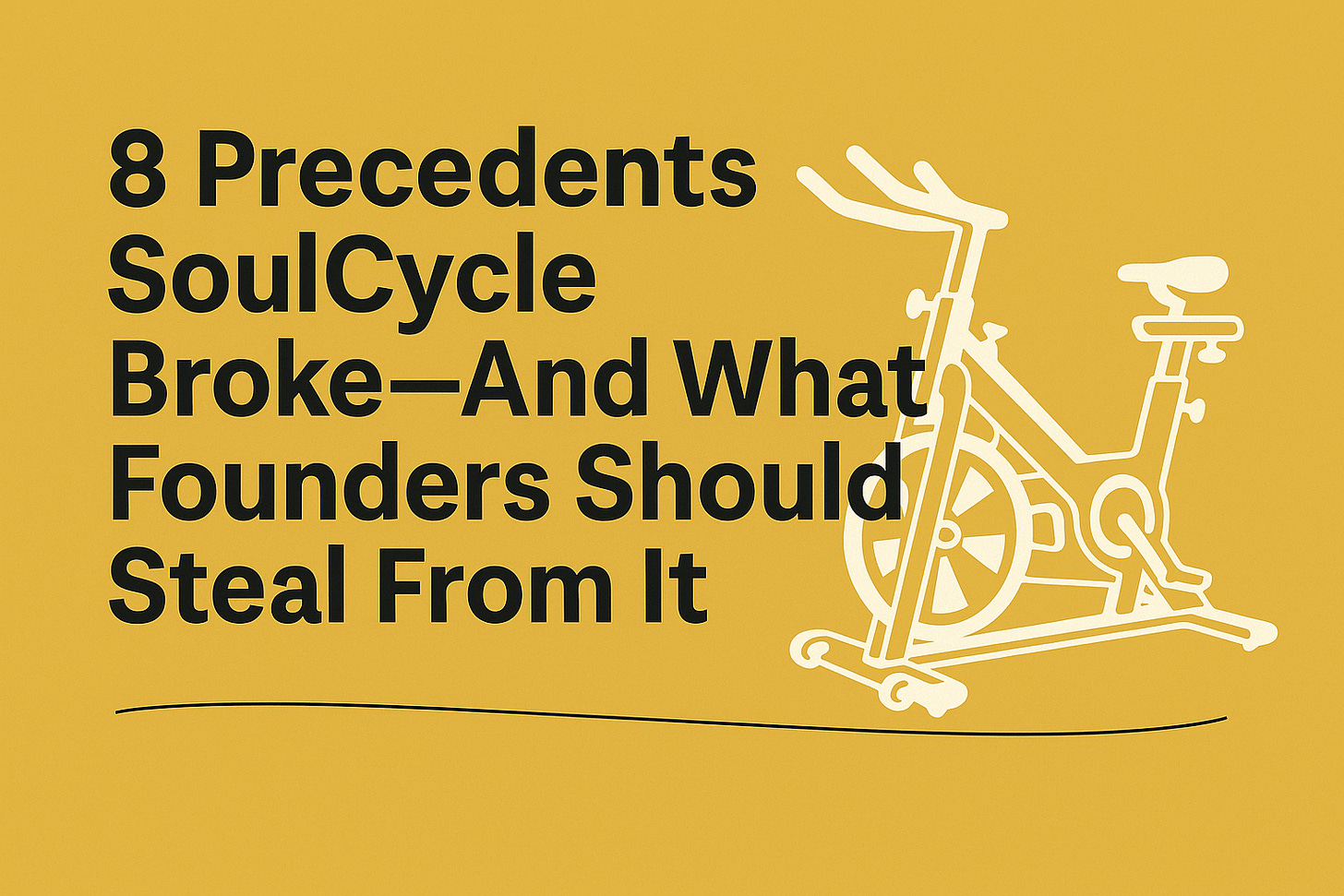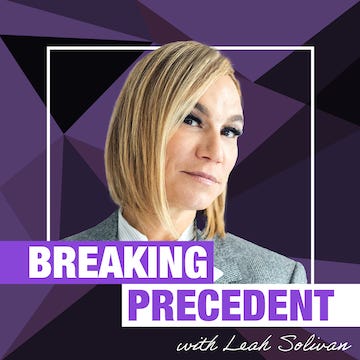8 Precedents SoulCycle Broke — and What Founders Should Steal From It
In 2006, two women sat in a Starbucks, doing math on the back of a napkin. Not to raise capital. Not to forecast scale. Just to figure out if they could afford rent, bikes, and a little childcare—if 75 people a day showed up.
That napkin became SoulCycle.
And SoulCycle quietly became a masterclass in breaking precedent.
Before “disruption” became a VC buzzword, Julie Rice and Elizabeth Cutler were rewriting the playbook for what a business could feel like. They didn’t launch a startup to chase scale. They built an experience to change people. And in the process, they rewired an entire industry.
Here are eight precedents they broke—and why their choices still resonate today.
🌀 1. Gym Memberships → Pay Per Class
Old rule: Monthly memberships banking on non-use.
What they did: Charged per ride.
Why it worked: Forced a daily re-earning of trust and created urgency. Loyalty became a real-time metric.
🎭 2. Utility Design → Sensory Theater
Old rule: Fitness as function.
What they did: Dark rooms. Candles. Music synced to a five-act emotional arc.
Why it worked: You weren’t just working out. You were starring in your own comeback story.
🌟 3. Disposable Instructors → Iconic Talent
Old rule: Freelance fitness teachers, underpaid and replaceable.
What they did: Full-time, benefits, brand builders.
Why it worked: Instructors became micro-celebrities. Customers followed people, not just products.
💦 4. Solo Sweat → Ritualized Community
Old rule: Workout, leave, repeat.
What they did: Built spiritual infrastructure—emotional catharsis, human connection, shared rituals.
Why it worked: Group fitness became group therapy.
🛖 5. Paid Ads → Pop-Up Mythology
Old rule: Take out glossy ads.
What they did: Opened a summer barn studio in the Hamptons instead.
Why it worked: It wasn’t marketing—it was pilgrimage. Demand grew by word-of-body, not billboards.
🧵 6. Fast Franchise → Controlled Craft
Old rule: Franchise to scale.
What they did: Tightly controlled every touchpoint.
Why it worked: Brand consistency trumped footprint. Fewer studios, more loyalty.
💁🏻♀️ 7. Automation First → Hospitality Always
Old rule: Use tech to reduce headcount.
What they did: Staff remembered birthdays, shoe sizes, moods.
Why it worked: It wasn’t customer service. It was customer stewardship.
🎶 8. Metrics Obsession → Meaning First
Old rule: Optimize for throughput.
What they did: Designed feelings.
Why it worked: People don’t return for products. They return for how you made them feel.
💡 The Lesson Isn’t to Break the Rules—It’s to Choose the Right Ones to Break
Julie and Elizabeth didn’t break every precedent. They broke the right ones. The ones that treated customers as transactions. The ones that assumed fitness was only physical. The ones that said scaling humanity was too hard to be worth it.
And here’s the part we don’t talk about enough: SoulCycle didn’t just win. It succeeded.
Winning is numbers—revenue, bookings, expansion. It’s about putting points on the board. And usually, someone else has to lose for you to win.
Success is different. Success can include winning, but it asks harder questions:
Did you act with integrity?
Did you stay aligned with your values?
Did your company improve the lives of the people it touched?
By that measure, SoulCycle wasn’t just a fitness brand. It was one of the most successful cultural products of its time.
So if you’re building something—and trying to be different—maybe don’t ask what you can automate.
Ask: What are you willing to make inconvenient… in order to make it unforgettable?


